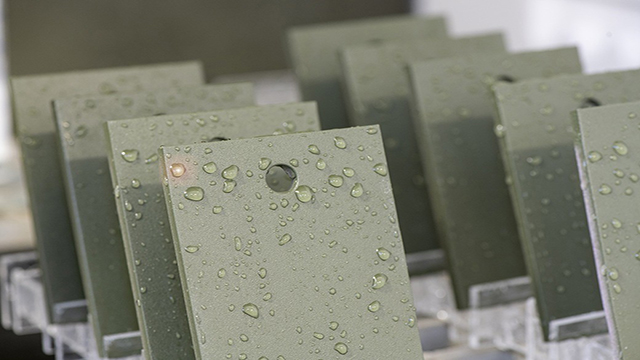What is Corrosion?
Corrosion is defined as the degradation of materials - including metals, concrete, polymers etc. – due to rusting. Besides financial losses, corrosion also affects health, safety and the environment.
Corrosion has an impact on all industries - like oil and natural gas, resources sectors - and most aspects of human activities, thus, impacting the entire value chain. When optimal corrosion management practices are followed, it leads to maximizing efficiency. Moreover, it also ensures safe and environmentally compliant operations, thus reducing costs.
What is Corrosion Testing?
In order to solve, prevent or mitigate corrosion problems, manufacturers, engineers and laboratory technicians conduct corrosion testing. The various tests for corrosion are aimed at providing useful information to manufacturers, so that they can make decisions regarding the selection of materials and their processing. Thus, they can choose the right material for piping as well as equipment, components and metal parts such that future failures can be avoided.
Corrosion testing is also beneficial in revealing opportunities to improve performance and quality of materials. In industrial applications, corrosion testing is required to verify conformance to quality standards. It's a versatile process and can be customized to meet specific needs.
During Corrosion testing, the sample is exposed to various test solutions and also to different physical or metallurgical situations. Evaluation of the sample to corrosion resistance can help prevent losses.
What can corrosion testing be used for?
Analysis of corrosion and rusting involves metallurgical investigations of Components Equipment, Metals, Alloys, Coatings, Linings and structures.
It studies the environmental degradation and abuse, metal misapplication and mechanical failure of metal parts and components. Such investigations are especially beneficial in the chemical processing, refining, oil and gas, and pulp and paper industries.
The pattern left behind due to corrosion is analyzed with optical and scanning electron microscopy. A thorough analysis is conducted so as to include detailed information about the impact of weathering, climate and environmental conditions, to which the samples under test were exposed.
The process of corrosion is accelerated using immersion testing and salt spray chambers. A through analysis of the corroded samples for penetrations or crack surfaces that can yield information about the corrosion mechanism.
How is Accelerated Weathering Corrosion Testing Conducted?
In order to estimate the life of a metal component laboratories and manufacturers can simply compare various samples in a simulated environment, and screen materials for their suitability. Accelerated weathering testing also provides quality control by ensuring that the metal enhancement processes being used during production, such as coatings, anodizing and electroplating, are being applied in compliance with manufacturer specifications.
If you’re an OEM vendor, it is mandatory that your test results are consistent with the standards specified by the buyer. Compliance is strictly monitored before accepting your shipment.
What are the Applications of Accelerated Weathering Corrosion Testing?
- Analysis of finished products for pitting and crevice corrosion susceptibility
- Comparison and screening of raw materials for corrosion characteristics
- Evaluating/comparing exposure effects on corrosion properties
Why Conduct Corrosion Testing?
Durability and Protection –
Performing accelerated corrosion test of the product, helps manufacturers to predict and estimate the service life of their component/product. To ensure that their products provide adequate protection throughout the duration of its life span, accelerated corrosion testing is conducted.
The corrosion levels are monitored at specified time intervals, by opening the cabinet and taking photographic evidence of any surface oxidization.
Performance Indication Results-
A reliable source for predicting the suitability of a protective and effective corrosion resistance, corrosion testing is highly beneficial. The test apparatus creates the precise environmental test conditions, such that, the laboratory technicians examine the metal plate surface for evidence of corrosion characteristics, throughout the test cycle.
Analysis of Blistering and Creep Defects –
The aim of corrosion testing is not only to search and assess edge protection, but also check blistering and creep defects. Now, since numerous small metal panels or objects can be accommodated in the chamber, it allows multiple products to be compared scientifically, at the same time, in the same controlled test environment.
It often happens that the process of corrosion is evident underneath the coating. So, a membrane is formed, which exposes the untreated surface to air and moisture. Blistering usually starts to become evident in the center of the metal sample.
Methods of Corrosion Testing
A variety of tests are conducted on hundreds of materials to analyze where the potential for any of the many varying types of corrosion was present. In addition to electrochemical corrosion testing capabilities, laboratories also need the equipment and expertise to simulate most corrosive environments. This can be done by using a comprehensive array of aqueous and accelerated weathering methods, such as:
- Salt Spray Testing
- Cyclic Corrosion
- Humidity Exposure
- Exposure Testing
For more information, visit www.testronixinstruments.com.
Testronix Instruments is the one stop shop for the best corrosion testing machines and equipment in India. For further assistance, please visit https://www.testronixinstruments.com/ or call +91-9971040808 for more details and customization of the equipment.


